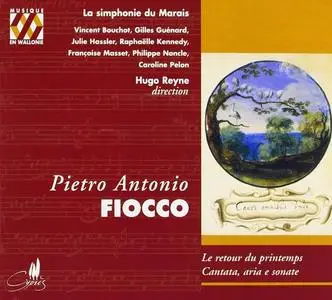Hugo Reyne, La simphonie du Marais - Pietro Antonio Fiocco: Le Retour du Printemps (2000)
EAC | FLAC | Image (Cue & Log) ~ 305 Mb | Total time: 64:13 | Scans included
Classical | Label: Cypres | # CYP 3616 | Recorded: 1999
EAC | FLAC | Image (Cue & Log) ~ 305 Mb | Total time: 64:13 | Scans included
Classical | Label: Cypres | # CYP 3616 | Recorded: 1999
Many Italian composers of the 17th century went abroad to look for a job. Most of them travelled to Austria or Germany, but some took another direction. The best-known of them was Giovanni Battista Lulli, who as Jean-Baptiste Lully dominated musical life in France in the second half of the 17th century. Another one was Pietro Antonio Fiocco, who stayed the largest part of his life in the Southern Netherlands.



